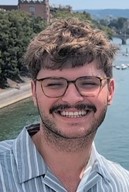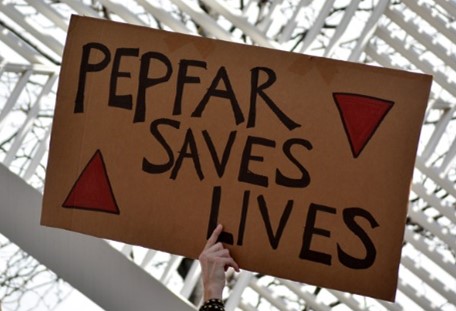By Manuel Zauner
Now that my clinical training year is coming to an end, and I am already looking back on it with a touch of premature nostalgia, I cannot help but reflect on my experiences during this time, even critically. I had, and fortunately still have, a family that supports my urge to travel the world, and a university that encourages me in this. As a student, I was able to get to know Nagoya in Japan, Philadelphia in the USA, Zurich in Switzerland, and even Dar Es Salaam in Tanzania, and immerse myself in the reality of life there, sometimes wading deeper, sometimes only in shallow waters.

Above all, the contrast between East Africa and other, more prosperous countries still haunts me, and even during my time there, it raised the question, “What are we, or rather our states and governments, doing for countries like Tanzania to ensure that the people there receive good medical care, and what does this relationship actually look like?”
At the orthopedic institute of Muhimbili National Hospitals, where I had the opportunity to work for four months, I found some answers to this question. One example is the SIGN Nail Program, a US-based non-profit organization that designs orthopedic implants that can be used even in low-income countries without extensive high-tech support, and also provides them to local hospitals.
This system is used many times every day there. Without it, adequate treatment of traumatic fractures would simply be impossible. SIGN obtains the necessary funds for this from private donors and not from a government organization. It was also impressive to see how well the orthopedists at Muhimbili National Hospital were internationally networked. As part of the AO Foundation, a Swiss foundation that aims to establish a global standard for the treatment of traumatic injuries, members of the team can regularly participate in international conferences and training courses.

On the other hand, I also had the opportunity to learn about the arthroplasty program, which the institute is very proud of and which only the most experienced surgeons are allowed to perform. This pride is justified, because until recently, this program did not exist at all. The reason for this was quite simple: the implants manufactured by Western manufacturers were prohibitively expensive. But now, with inexpensive prostheses from Chinese manufacturers that are not of inferior quality, four patients can be treated every day, compared to only one or two per month previously.
With these thoughts and experiences in mind, I flew back to Austria after my four months in Dar es Salaam, feeling somewhat conflicted.
The positive impact of the various programs was obvious, and I was able to experience firsthand the commitment shown by everyone involved.
But viewed critically, all the efforts of the AO Foundation and SIGN were not structural solutions, but philanthropic projects that would not exist without wealthy donors, whether private or public.
Against this backdrop, the cuts in international development aid announced by the Trump administration at the beginning of this year, particularly PEPFAR (The U.S. President’s Emergency Plan for AIDS Relief), hit even harder.
Since 2004, the President’s Emergency Plan for AIDS Relief has been one of the most important components of the global response to HIV/AIDS. The possible end of this program would spell disaster for the health systems of many countries with limited resources and infrastructure, especially in the southern hemisphere.
Taking Tanzania as an example, one must consider the phase of the AIDS pandemic in which HAART (Highly Active Antiretroviral Therapy) was introduced.

It was not yet available in southern Africa. In 2004, HIV prevalence was 7%, and the annual number of deaths peaked at 100,000 – out of a total population of 36 million at the time. Relative to the population of Austria, this would correspond to 25,000 deaths per year – more than were recorded during the entire COVID-19 pandemic.
To illustrate the success of PEPFAR, it helps to look at the same data points for 2023. Prevalence has now fallen by almost half and currently stands at 3.8%. The annual number of deaths is now only 26,000 – with a rapidly growing population of 66 million.
Numbers alone cannot convey how hopeless the situation was at the height of the AIDS pandemic in southern Africa and what an immense success PEPFAR and similar programs represent—but they do at least give a sense of the scale. For me, the most impressive figure is the number of lives saved: according to estimates, 26 million lives have been saved so far. But this success story is now facing an abrupt end. With access to HAART becoming more difficult and clinics closing, the entire response is in danger of being scaled back to a minimum. UNAIDS, the United Nations‘ umbrella program, warns that 4.2 million preventable deaths could occur in the next four years alone if the planned cuts are implemented. That would be a real disaster for Global Health.
At this point, it is worth taking a step back and putting the Trump administration’s negligent, deadly decision into context. PEPFAR was launched in 2004 by President George W. Bush as the flagship of US international aid – a decision that was motivated as much by politics as by humanitarian concerns. However, the timing also raises an economic question: until PEPFAR was introduced, HAART treatment cost around $10,000 per year and was manufactured by Western pharmaceutical companies.

Meanwhile, in the early 2000s, Indian manufacturer Cipla produced the same drugs, approved by the World Health Organization (WHO), for only $350 per year, which, significantly, were not approved by the US.
In May 2004, a political turnaround took place. HAART treatment from Western companies was made significantly cheaper and distributed to countries in need via PEPFAR.
Here, economic interests clearly form the basis for a political decision, and if there had not been external pressure for cheaper HAART, I would not bet on PEPFAR having been financed to the same extent.
The AIDS pandemic also has its tragic political episodes in which economic interests have prevented an effective response. For example, as early as 1998, the South African government attempted to regulate access to affordable HAART by law, but 39 pharmaceutical companies joined forces and sued the South African government. It was not until 2001, under pressure from activists and international outrage, that the lawsuit was dismissed. To put this action by the pharmaceutical industry into context, I would like to present a few statistics.
In 1998, South Africa reached its sad peak with 510,000 new HIV infections per year, and 130,000 people died of AIDS. By 2001, the number of deaths had risen to 200,000. Economic interests took precedence, and progress had to be fought for. But in South Africa, activists were not only up against pharmaceutical companies – the government at the time also doubted that AIDS was caused by HIV at all. It was a dangerous cocktail of denial of scientific facts and crippling bureaucracy that cost countless South Africans their lives.
What conclusions can be drawn from these examples, and how can I answer my original question? – Western, wealthy countries undeniably make a significant contribution to healthcare in the Global South. However, these programs are often heavily problem-oriented, which means that the focus on a single clinical picture limits the scope for a comprehensive structural analysis of the social determinants of health. For example, the AO Foundation and the SIGN-Nail program have enabled high-quality care for trauma patients, but an economically viable alternative for joint prostheses was necessary in order to perform arthroplasty at Muhimbili National Hospital on a larger scale. It is simply unacceptable that a large part of the global fight against AIDS depends on the whims of the US president – a single signature that can destroy millions of lives, and as things stand at present, probably will.
We must not view “global health” as a mere cliché, but rather understand the term in its true meaning and demand that it form the basis for our governments‘ political decisions. It must evolve from a purely academic concept into a guiding principle of strategic health policy at the global level. For in an era of all-encompassing globalization, the Global South is neither distant nor foreign—our own affluent societies are directly dependent on social and economic developments there.
If we strengthen local structures,create programs that are geared to the actual problems on the ground and firmly embedded in society, and if we overcome the power asymmetry between the Global South and North in health policy decisions, we will all benefit as humanity as a whole. Then we can move forward into the future as equal partners, not as benefactors and recipients.

Important Websites:
The SIGN Nail Program is a nonprofit initiative that provides surgeons in developing countries with free orthopedic implants and training. The program enables the treatment of complex bone fractures even in hospitals with limited resources.
The AO Foundation is a global organization based in Switzerland that focuses on research, education, and development in the field of bone surgery. It offers training courses and innovative surgical solutions for fracture treatment.
The official PEPFAR website provides information about the US government program to combat HIV/AIDS worldwide. It provides data, reports, and goals of the program and shows its global impact on HIV treatment and prevention.
This page discusses the potential impact of budget cuts to PEPFAR on the global fight against HIV/AIDS. UNAIDS warns of setbacks in the care of millions of people, especially in Africa.
In this interview, one of the key figures responsible for developing PEPFAR explains the background, objectives, and challenges of the program. It offers insights into political decision-making processes and global health policy.
This article examines the history of PEPFAR under the George W. Bush administration. It describes the political and humanitarian motives behind the implementation of what was then the largest health program in US history.
The article in the British Medical Journal (BMJ) reports on a legal dispute in South Africa concerning medical liability and standards for orthopedic implants—possibly in connection with the use of programs such as SIGN.
Ilona Kickbusch is a leading expert on global health. Her definition of “global health” emphasizes cross-border cooperation, social justice, and the importance of political measures for healthcare worldwide.
If you have any questions about Manuel Zauner’s internship abroad, or if you have any questions for Manuel Zauner personally, please contact the GI editorial team directly. Send us an
email at: media@goinginternational.org
Do you have questions about work and further education or job hunting and careers? Then write to Ms. Seitz: office@goinginternational.org
Published in GI-Mail 09/2025 (German edition), ISSN: 2312-0819, Going International, Vienna 2025

Citation:
Zauner, Manuel: “Global Health between Aspiration and Reality: Four Months at Muhimbili Hospital in Dar Es Salaam, Tanzania”
Here you can download this publication.
Published in GI-Mail 10/2025 (English edition).
- Do you already know our monthly newsletter GI-Mail with useful tips on postgraduate courses?
Sign up here. - Are you looking for vacancies or new career challenges? Here you will find the latest vacancies and job offers.
- Do you already know our monthly job-information GI-Jobs with current job offers for doctors, managers and nurses? Sign up here.
- Are you interested in up to date postgraduate courses and CME? In our education database »medicine & health« you will find new education events from over 2300 organizers.
